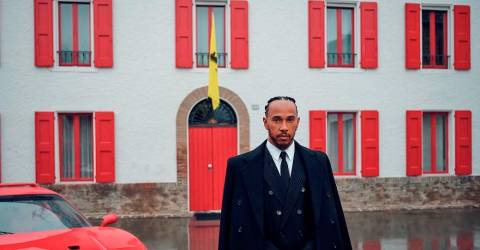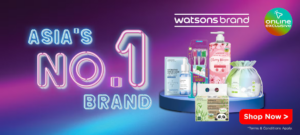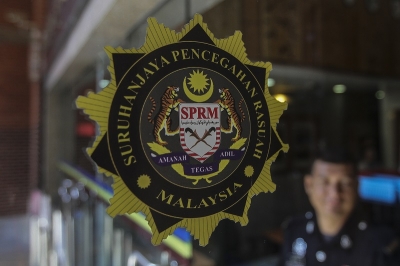IT is race week! The 75th Formula 1 (F1) season kicked off on March 16 and this only means one thing – Paddock Fashion Week is back.
While some, clinging to a quaint notion of “serious sport”, might suggest F1 has no place in fashion, one could hardly ignore it as one of the most luxurious and glamorous sports — second only to tennis.
Lest it has eluded purists, several top teams in F1 have connections to the luxury automotive industry, such as Ferrari, Mercedes, McLaren and in 2026, Cadillac.
In a sport built on exclusivity, luxury and fashion are no strangers on the fast lane.
F1’s rise in pop culture
The once-niche obsession becoming mainstream can be attributed to F1’s turbo-charged popularity after Netflix’s Drive to Survive documentary.
Now in its seventh season, the show transformed F1 from a technical sport into a high-stakes drama, drawing in new fans – many of whom are more interested in the spectacle than the stats. This cultural shift has given the sport pole position in brand visibility, thrusting it into the sartorial spotlight.
As such, in January 2025, French conglomerate LVMH secured a 10-year partnership as one of F1’s lead sponsors, replacing Rolex, which bestowed fashion house Louis Vuitton the honour of title partner at the Australian Grand Prix, marking the fraternity’s boldest move into motorsport. With Tag Heuer returning as its official timekeeper, the racing bug has infected the sartorial scene just in time.
F1 racers x brand deals
“There was once a time when high fashion and high performance could not exist alongside each other,” shared Sir Lewis Hamilton to Business of Fashion.
Leading by example, Hamilton, who has broken multiple F1 records on track, signed a partnership with luxury Parisian label Dior as its ambassador and guest designer in late 2024. He worked with Dior’s former artistic director of menswear Kim Jones to create the Lifestyle Capsule collection dedicated to snow sports.
As Hamilton trail-blazes in bridging the gap between the sartorial scene and F1, the drivers are in a unique position, in which they find themselves having a presence beyond the sport. For instance, McLaren Formula 1 Team’s racer Lando Norris is the brand ambassador for Ralph Lauren fragrance and Scuderia Ferrari HP Formula 1’s Charles Leclerc represents Armani as well as fashion jewellery brand APM Monaco. Thus, luxury and fashion brands are now building campaigns by merging the drivers’ aesthetic with their own. A prime example is Atlassian Williams Racing’s pilot Carlos Sainz for L’Oreal Paris.
An inside joke within the F1 community is that no matter the condition, the Spaniard has the best hair on the grid. The joke was a marketing opportunity banked in by the brand, setting the tone for future brand deals within the F1 fraternity.
Charlotte Tilbury F1 Academy
The first female-owned beauty brand to have partnered with the motorsport, Charlotte Tilbury found home in the F1 Academy — a racing series designed to develop young female drivers to advance to higher levels of motorsport.
This historic partnership, which could be attributed to rising numbers of F1 female fans, was announced with a special livery that embodies the brand’s aesthetic in 2024.
The event is a turning point as the female revolution within the often-misogynistic community is nigh. The global beauty brand is also sponsoring Rodin Motorsport Chloe Chong, further exercising its commitment to putting fashion and female-led sports in the forefront.
The partnership also contributes to the shift of narrative when concerning the superficiality of the disciplines — beauty and fashion. Often ridiculed for being “girly interests”, the association between fashion and beauty houses and F1 is loosening the grip toxic masculinity has on the sport. This enhances female visibility on the track, moving beyond past stereotypes such as grid girls that confined genders to specific roles. Partnerships such as Charlotte Tilbury are not just reshaping F1 gender dynamics, but also redefining the sport’s relationship with beauty and fashion.
Cultural impact of F1 wags
Beyond luxury partnerships and drivers, the beau monde’s interest in F1 can be attributed to the women, specifically the drivers’ wives and girlfriends (wag).
Unlike football wags, F1 wags have turned the paddock into their personal runway, making headlines with their carefully curated aesthetic.
It is undeniable the wags hold significant influence, akin to influencers and celebrities, in boosting brand visibility on an international arena.
One such example is the Rhode campaign featuring Leclerc’s partner and art coordinator Alexandra Saint Mleux, who was the face of the brand’s fall campaign. The beauty brand leveraged Saint Mleux’s huge following within the F1 community, proving wags hold sway beyond just the paddock.
However, the rise of wag culture in F1 is criticised by purists as they argue the increasing focus on the drivers’ personal lives distracts from the sport and enhances F1’s crossover appeal, thus taking away its authenticity. Despite the scrutiny, brands continue to capitalise on the paddock ladies’ appeal, proving their cultural pull in the motorsport’s evolving cultural landscape.
F1 has become a place where fashion and luxury brands exploit opportunities to increase their cultural footprint. No longer a track for racing purists, it has evolved into a spectacle of speed and style. As we let 20 men driving around in the fast cars decide our mental health every week until Dec 7, best believe we will also keep tabs on the fashion coup on track.








